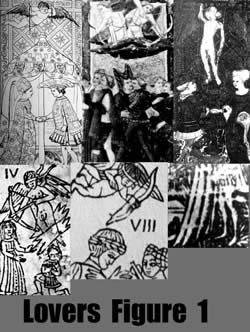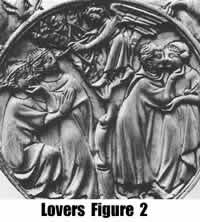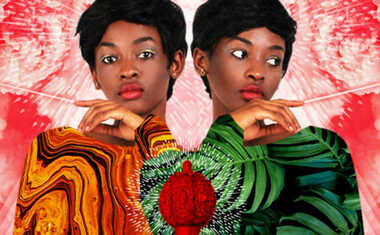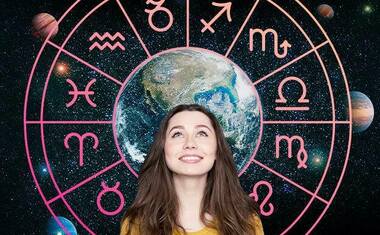
Iconology of the Lovers Cards
From the Iconology Section of the Robert O'Neill Library
Introduction
Six examples of the Lovers card have survived from the 15th/16th centuries (Figure 1). In the type B ordering, the Lovers cards are number seven.The imagery is quite consistent and shows a young couple with a cupid hovering above. One card shows three couples with two cupids. The last card (lower right) is a fragment but probably also had the typical Cupid above.

One might expect to see a reference of Venus on this card. But the usual representation of Venus, for example in the so-called Tarocchi de Mantegna, www.levity.com/alchemy/mantegna.html doesn't look very much like the Tarot image. There is, however, some resemblance to an image of the Triumph of Venus which shows a number of couples to the side of the picture (Meiss 1970, p.167).
The Tarot is similar to the common secular imagery of courting couples, such as Duby (1988, p. 126) and Figure 2 from the 14th century.
The religious tradition
The image on the early Tarot cards is basically a secular symbol but since courtship is a normal part of life, the image also appears in religious contexts, such as monasteries.
Here is an example of such an image:
www.historicimpressions.com/LoversL.jpg
One also frequently finds representations of wedding ceremonies complete with minister and witnesses (Meiss and Kirsch 1972, p. BR1), (Hind 1935, p. 293), (Voelke 1990, p. 146). A number of additional examples can be found in Meiss (1951, figures 101-107).
The triumphal tradition
Love is a major symbol in Petrarch's poem since the first section is entitled The Triumph of Love. The central image in the poem is Cupid: "...Four steeds I saw, whiter than whitest snow, and on a fiery car a cruel youth with bow in hand and arrows at his side. No fear had he, nor armor wore, nor shield, but on his shoulders he had two great wings of a thousand hues; his body was all bare. And round about were mortals beyond count..."
There is a part of the Triumph of Love that may have influenced later Tarot cards which show a man standing between two women: "...Behold then Theseus, captive, though so famed, led between sisters twain who both met death: One set her love on him, he loved the other."
But although love is a major symbol in the poem, the typical artistic representation of the Triumph of Love focuses more on Cupid than on the courting couple. Cupid ordinarily appears on a chariot with a tall pedestal and drawn by 4 white horses.
 Another example from the 15th century is given by Williams (1994, p. 60) and a 16th century example can be seen Carnelli (1971, plate 12). The triumphal image that most closely resembles the composition of the early Tarot card (Figure 3) is a woodcut from 1492/3 that shows the blindfolded Cupid directly above an isolated couple.
Another example from the 15th century is given by Williams (1994, p. 60) and a 16th century example can be seen Carnelli (1971, plate 12). The triumphal image that most closely resembles the composition of the early Tarot card (Figure 3) is a woodcut from 1492/3 that shows the blindfolded Cupid directly above an isolated couple.
Dance of the death tradition
Death is a very individual experience. The imagery of the Dance of Death tradition deals with single individuals being carried off to their own death. So it is probably not surprising that couples are not involved in the imagery nor is the image of Cupid.
Apocalyptic tradition
Nothing resembling the early Lovers card appears in the apocalyptic tradition. Perhaps the closest connection can be found in Dante's Divine Comedy where ill-fated lovers occupy a not-so-terrible place in the upper regions of hell. Images illustrating this section of Dante's apocryphal journey can be found in the separate article on Dante and the Tarot.
Iconological analysis
The early Tarot images are a representation of human love. Comparison with contemporary images point to a relatively simple interpretation: love as a normal part of the human experience.
It is reasonable to posit an influence of the Triumphal artistic tradition on the early Tarot image. Petrarch's poem would have been a logic reference for the artist or woodcutter and the illustrations for the poem certainly feature Cupid as the symbol of Love. However, the poem refers to a fiery chariot and white horses rather than a cloud overhead. So the most likely direct source of the Tarot image was the secular and religious images of courtship and marriage.
Interpretation
Upon seeing the Lovers card, the card-players would most likely have thought of their own experiences of love. According to Petrarch, love enslaves all estates of man and is a shared experience, almost at the same level of universality as Death.
For most, love is the first and most powerful experience of the non-self. The love act and the experience of orgasm is an ecstatic union of the opposites that might be thought of as the temporal equivalent of the ecstatic mystical experience hinted at in later cards. Perhaps some card-players would have seen the Lovers card as representing the integration of the temporal/spiritual and male/female dualities represented by the Papess/Empress/Emperor/Pope cards that preceded it. Perhaps some few would have seen a reference to the esoteric sexual magic rituals designed to elicit transpersonal experiences.



